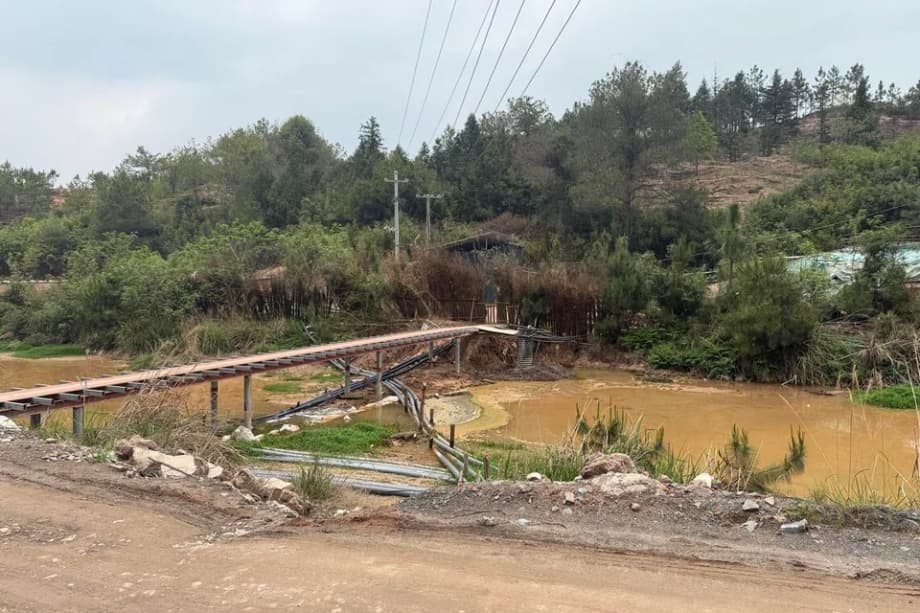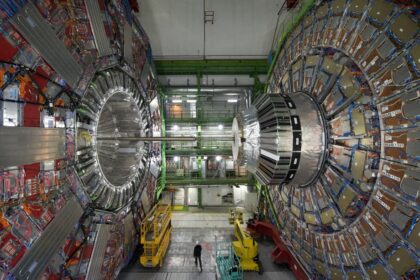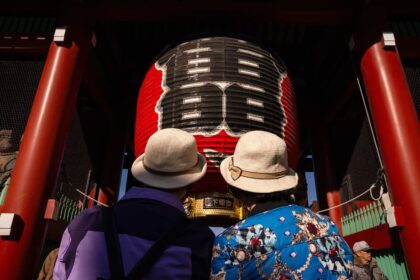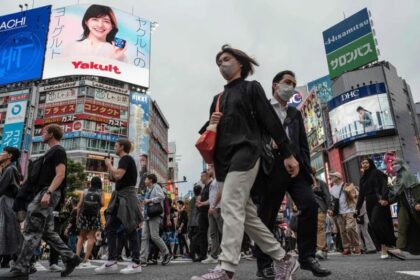Deep sea rare earths near Minamitorishima move from theory to trials
Japan is preparing a world first attempt to lift rare earth rich mud from the deep seabed near Minamitorishima, a remote atoll roughly 1,900 to 2,000 kilometers southeast of Tokyo. Government planners say test mining will start in January 2026, targeting depths of 5,000 to 6,000 meters. The goal is not quick profit. The aim is a stable domestic supply of metals that underpin electric vehicles, wind turbines, smartphones, medical gear, and advanced weapons. The trial comes after China tightened export controls on several crucial rare earth elements, a move that rattled automakers and electronics makers around the world.
- Deep sea rare earths near Minamitorishima move from theory to trials
- Why these metals matter for modern life
- What makes Minamitorishima different
- How Japan plans to mine at 6,000 meters
- Environmental risks and the scientific debate
- Economics, costs and who pays
- China, supply chains and the new mineral politics
- Can Japan build a complete value chain
- Key Points
The resource Japan is targeting is unusual. Surveys inside Japan’s exclusive economic zone have identified mud layers with high concentrations of rare earth elements, including heavy and medium categories that are scarce and expensive. Researchers have cited reserves around Minamitorishima of roughly 16 million tonnes with grades that, in some elements, exceed typical land deposits. A 2018 analysis by Japanese scientists described the deposit as capable of supplying certain rare earths for hundreds of years, in a range of around 420 to 780 years depending on the element. That potential has framed Minamitorishima as a strategic asset as the global race for critical minerals intensifies.
Turning potential into supply is the hard part. Mining at 6,000 meters has never been done at scale. The test will lower pipes from a deep sea research vessel operated by the Japan Agency for Marine-Earth Science and Technology, haul mud to the surface, and ship it to the mainland for analysis and separation of elements such as dysprosium, terbium, neodymium, and gadolinium. If the trial works, Japan plans to move to a pilot system in January 2027 that can recover about 350 tonnes of mud per day. Officials are clear about the trade offs. Each voyage will be costly, the engineering margins are thin, and new refining capacity is required before any metal reaches factories. The first commercial deliveries are targeted for 2028, but success depends on technology, prices, and policy support.
Why these metals matter for modern life
Rare earths are a family of 17 metallic elements that make modern electronics and clean energy hardware smaller, stronger, and more efficient. The most familiar names include neodymium, praseodymium, and samarium, essential for the powerful permanent magnets inside electric vehicle motors and wind turbine generators. Heavier elements such as dysprosium and terbium help those magnets retain performance at high temperatures, which is critical in drive trains and aerospace components. Other elements, including yttrium, europium, and gadolinium, are used in displays, lasers, medical imaging, and specialized alloys.
China dominates both mining and processing of rare earths, especially refining into oxides, metals, and magnet alloys that manufacturers actually use. That concentration creates a chokepoint. This year Beijing expanded export controls on several medium and heavy rare earths, building on earlier restrictions. The moves disrupt supply planning, drive price volatility, and add geopolitical risk for manufacturers. The United States responded with new tariff threats, and allied governments have urged coordination to diversify supply.
Japan has lived through this before. In 2010, a diplomatic clash triggered a sharp fall in Chinese rare earth exports to Japan. At the time, Japan relied on China for about 90 percent of its needs. Diversification efforts since then, including new contracts in Australia, India, and Kazakhstan, as well as investment in refineries in Malaysia and Vietnam, have reduced that share to just under 60 percent. The vulnerability remains. Even a short disruption can ripple through production lines, as seen when export controls earlier this year forced Nissan and Suzuki to briefly stop certain assembly operations.
What makes Minamitorishima different
The Minamitorishima resource is not a conventional onshore ore body or a field of hard rock minerals. It is mud. Samples from cores and surveys point to an unusual mix with higher concentrations of heavy and medium rare earths. That matters because heavy elements are scarcer and fetch higher prices. The mud also contains fewer radioactive byproducts than many land based rare earth ores, which reduces some processing hazards and waste handling challenges.
Geography is both strength and weakness. The deposit lies within Japan’s exclusive economic zone, which gives Tokyo control over exploration and production. The site is remote, roughly 100 to 150 kilometers off the atoll at water depths of 5,000 to 6,000 meters. That isolation complicates logistics and emergency response, and the extreme depth pushes the limits of current offshore engineering. Unlike manganese nodules that sit on the seabed in other parts of the Pacific, the target here is fine grained mud that must be pumped as slurry. Engineers must collect several thousand tonnes per day in any future operation to reach economic scale.
A rare heavy element profile
Analyses emphasize dysprosium and terbium in the Minamitorishima mud, in addition to neodymium and gadolinium. That heavy element profile distinguishes it from many onshore deposits outside China, which are often richer in lighter elements. Japan’s resource picture at sea extends beyond rare earth mud. A separate survey led by Japanese researchers identified more than 200 million tonnes of manganese nodules with substantial cobalt and nickel at depths around 5,500 meters in the wider Pacific. Estimates suggest about 610,000 tonnes of cobalt, which is roughly 75 years of Japan’s consumption at current rates, and about 740,000 tonnes of nickel, or about 11 years of domestic demand. Those numbers highlight the broader strategic value of seabed resources, while also underlining the scale of the engineering challenge.
How Japan plans to mine at 6,000 meters
The government project is managed by a national platform for innovative ocean developments, working with the Japan Agency for Marine-Earth Science and Technology. Pipes lowered from a research vessel will lift mud from the seabed to the surface. The vessel, including the ultra deep drilling ship Chikyu, can handle heavy loads and long pipe strings. Early trials will focus on proof of concept. One operation is expected to recover roughly 35 tonnes of mud for laboratory work, which could contain on the order of a few dozen kilograms of rare earth elements. Success would pave the way for a pilot system in 2027 designed to move 350 tonnes per day, an amount suitable for testing separation and refining at scale.
Pipes, pumping and slurry
The seabed mud has the consistency of clay. To move it up a 5,000 to 6,000 meter water column, operators must mix it with seawater to create a stable slurry. That slurry must flow through a pipe that is longer than the strings typically used in deepwater oil operations. Many oilfield risers reach about 3,500 meters. The longer pipe adds weight and increases the risk of vibration. Engineers have modeled pipe dynamics to avoid resonant motion that can lead to fatigue. Equipment on the seabed must be robust but simple, because maintenance at that depth is risky and slow. Japanese teams have developed machinery to mill the mud into particles roughly 4 millimeters or smaller, improving pumpability while minimizing energy use. The system design has considered weak sediment layers under the mud and adjusted for foundations that will not sink or collapse under load.
From ship to shore
Once aboard, the slurry will be dewatered and transported to the mainland for separation of rare earth elements into oxides and metals. Officials have discussed a small pre processing unit on Minamitorishima in later phases to reduce transport volumes. Deep sea mud has relatively low levels of radioactive thorium and uranium compared with many land ores, which can simplify waste handling. Even so, the midstream steps remain complex. New refining capacity is essential, since rare earth separation involves repeated solvent extraction stages, careful pH control, and tight quality assurance to achieve the purity standards needed for high performance magnets and electronic components.
Environmental risks and the scientific debate
Deep sea mining is controversial. Scientists warn that ecosystems at abyssal depths are poorly understood and recover slowly. Sediment plumes raised by collectors and pumps can smother filter feeders and change water chemistry. The noise of heavy equipment may affect marine mammals and fish. There are also concerns about how far fine particles travel in the water column and whether trace metals could enter food webs. These risks are hard to quantify because there are few controlled studies at the scale being considered for commercial operations.
Japan’s program is proceeding in stages, which allows time to gather environmental data and adjust methods. Test mining at Minamitorishima will map plume behavior in local currents and measure sediment resettlement. Engineers can alter pump rates, collector heads, and discharge points to limit particle spread. Regulators will look at footprint size, seasonal schedules, and biodiversity monitoring as they assess future permits. The scientific case for caution is strong, and the debate over acceptable risk will parallel the engineering push.
International rules are evolving as well. The International Seabed Authority plans to finalize a mining code for activity in international waters. The Minamitorishima site sits inside Japan’s waters, so domestic law applies. Even so, global standards and lender expectations shape funding and off take deals. Several major banks have already tightened policies on financing deep sea mining projects until environmental impacts are better understood.
Economics, costs and who pays
This is a government led project framed as economic and national security policy. The intent is to build a domestic option for critical minerals even if early costs exceed market prices. Each offshore voyage is expected to cost more than 150 million yen. The specialized 6,000 meter pipe system and related equipment cost on the order of tens of billions of yen, with one procurement reported around 12 billion yen. Scaling from a proof of concept to a pilot plant, then to a steady operation, will require new ships, subsea gear, and onshore plants. The capital bill is large, and the learning curve is steep.
Prices and policy will decide commercial feasibility. If magnet demand grows faster than expected, or if export controls tighten again, higher prices could support offshore costs. A drop in prices would push breakeven further out. Another hurdle is refining. China holds the bulk of global separation capacity, especially for heavy and medium elements. Building a full refining chain in Japan or partner countries takes time, and it requires long term contracts with magnet makers to underwrite investment. Finance is another pressure point. Some international lenders have imposed restrictions on funding deep sea projects until comprehensive environmental assessments are available.
Officials stress patience. Early output volumes would be modest, then rise if the pilot proves reliable. The intent is to gain know how across the chain, from extraction to oxide, metal, and magnet alloy, even if initial unit costs are higher than imports. The payoff would be an insurance policy against supply shocks and a platform to expand as technology improves.
China, supply chains and the new mineral politics
The race for rare earths is inseparable from politics. China tightened export controls in April on several medium and heavy rare earths, such as dysprosium and terbium that are essential for high temperature magnets. On Oct 9, Beijing widened those controls and added more elements to the list. Officials in Washington called the actions a direct threat to industrial supply chains. The United States signaled that additional tariffs of up to 100 percent on Chinese imports were on the table, and allied governments urged coordination to prevent a repeat of past disruptions.
Japan has moved to build broader partnerships. Coordination with the United States, India, and Australia has accelerated, and Tokyo has also discussed supply chain cooperation with the European Union. These talks cover exploration, data sharing, refining, and stockpiling. The effort mirrors a wider push among advanced economies to spread risk across regions and reduce single points of failure in critical minerals.
Regional neighbors are also exploring the seabed. The Cook Islands, for example, has opened parts of its waters for exploration of nodules rich in nickel, cobalt, and manganese. While rules for international waters are still being drafted by the International Seabed Authority, national projects inside exclusive economic zones, like Japan’s, can proceed under domestic regulations. The acceptability of deep sea materials to buyers will depend on environmental standards, traceability, and public confidence in monitoring.
Can Japan build a complete value chain
Diversifying supply is only one step. To secure real resilience, Japan needs more midstream and downstream capacity. That means separation plants for heavy and medium elements, metalmaking, and magnet alloy production. Japan supported investments in Malaysia and Vietnam to expand refining outside China, but heavy elements remain the tightest part of the chain. The Minamitorishima mud is promising on that front, provided the chemistry can be separated efficiently and at comparable purity.
Reducing demand is the other lever. Researchers and manufacturers are developing magnets that use fewer rare earths, or none at all. Early designs can replace part of the dysprosium content or shift compositions to less constrained elements, though with trade offs in size or performance. Recycling is advancing too. Nissan and Waseda University are developing processes to recover rare earths from end of life motors and magnet scrap. Japan has grown its strategic stockpiles and built systems to collect and reprocess valuable components from used products. These steps buy time, but they do not eliminate the gap created by China’s lead in processing.
Logistics will matter as much as metallurgy. Minamitorishima is far from industrial hubs, so even small improvements in ship scheduling, on site pre processing, and containerization can reduce costs. Officials have discussed a simple refinery near the atoll in later phases to shrink the volume shipped to the mainland. If the pilot system meets targets in 2027, supply to private firms could begin around 2028. Delivering consistent, qualified material to magnet makers will be the final test. If that hurdle is cleared, Japan will have a real alternative source for some of the most strategic metals in the modern economy.
Key Points
- Japan will start test mining rare earth rich mud at 5,000 to 6,000 meters off Minamitorishima in January 2026, a world first at this depth.
- Surveys suggest about 16 million tonnes of rare earths in the deposit, with high shares of heavy and medium elements like dysprosium and terbium.
- The goal is a domestic supply for national security, with a pilot system targeting 350 tonnes of mud per day in January 2027 and potential private sector supply from 2028.
- Engineering challenges include a 6,000 meter pipe, stable slurry transport, seabed machinery, and new onshore refining capacity.
- Environmental risks center on sediment plumes and deep sea ecosystems, with phased trials designed to gather data and adjust methods.
- Costs are high, with each voyage exceeding 150 million yen and specialized equipment costing in the tens of billions of yen.
- China’s export controls on rare earths in April and Oct 9 underscored supply chain exposure; Japan has reduced its reliance on China from about 90 percent in 2010 to just under 60 percent today.
- Japan is expanding partnerships with the United States, India, Australia, and the European Union while the International Seabed Authority advances rules for international waters.
- Recycling, substitution research, and strategic stockpiles are part of Japan’s plan, but heavy element refining capacity outside China remains limited.
- If trials succeed, Minamitorishima could become a long term source of critical minerals and a buffer against future supply shocks.












